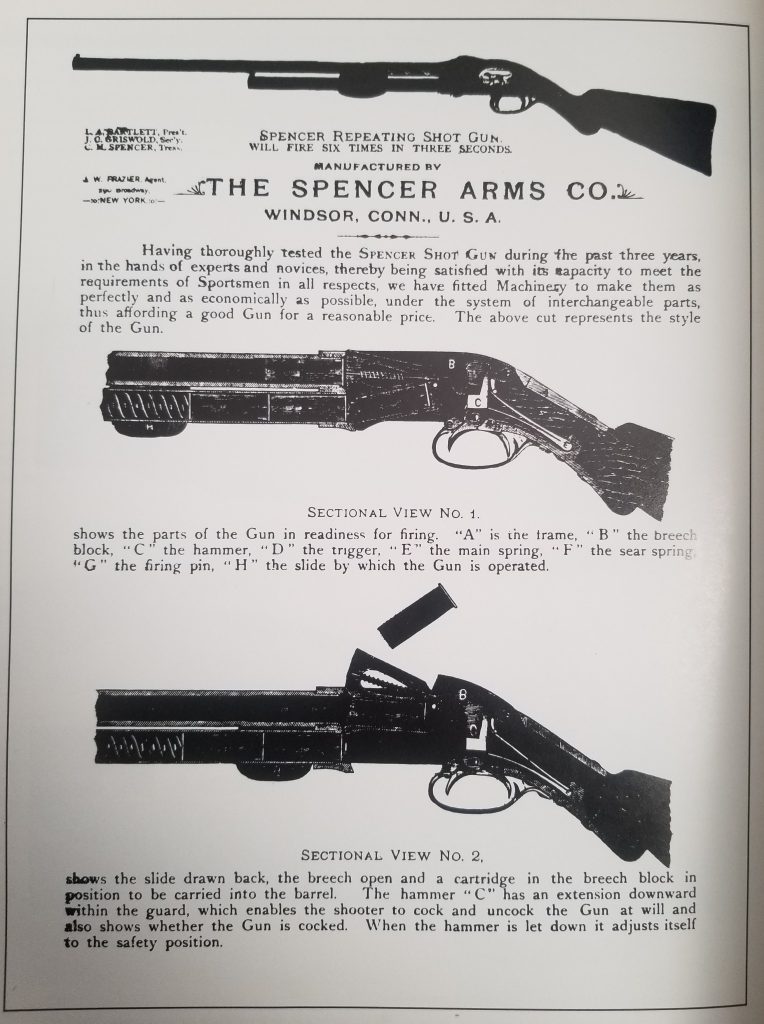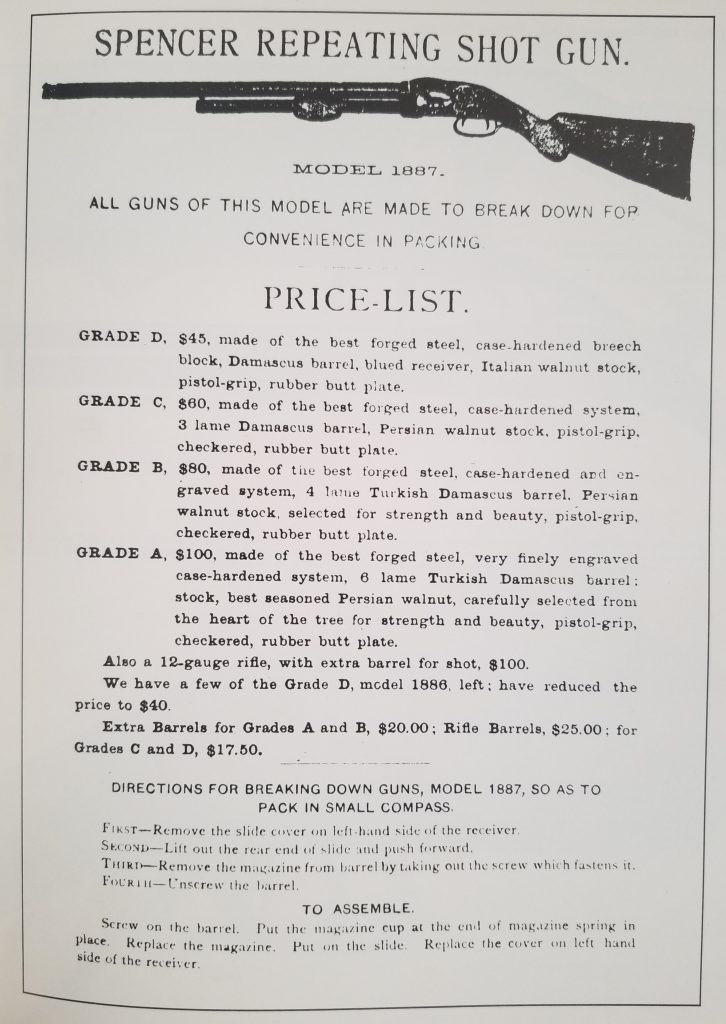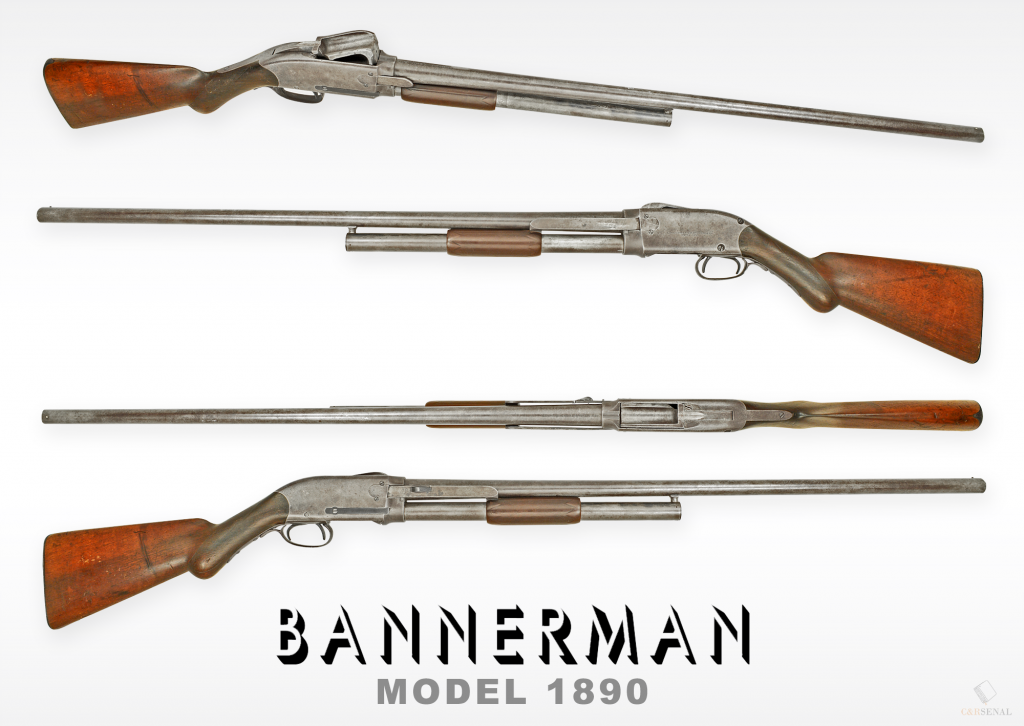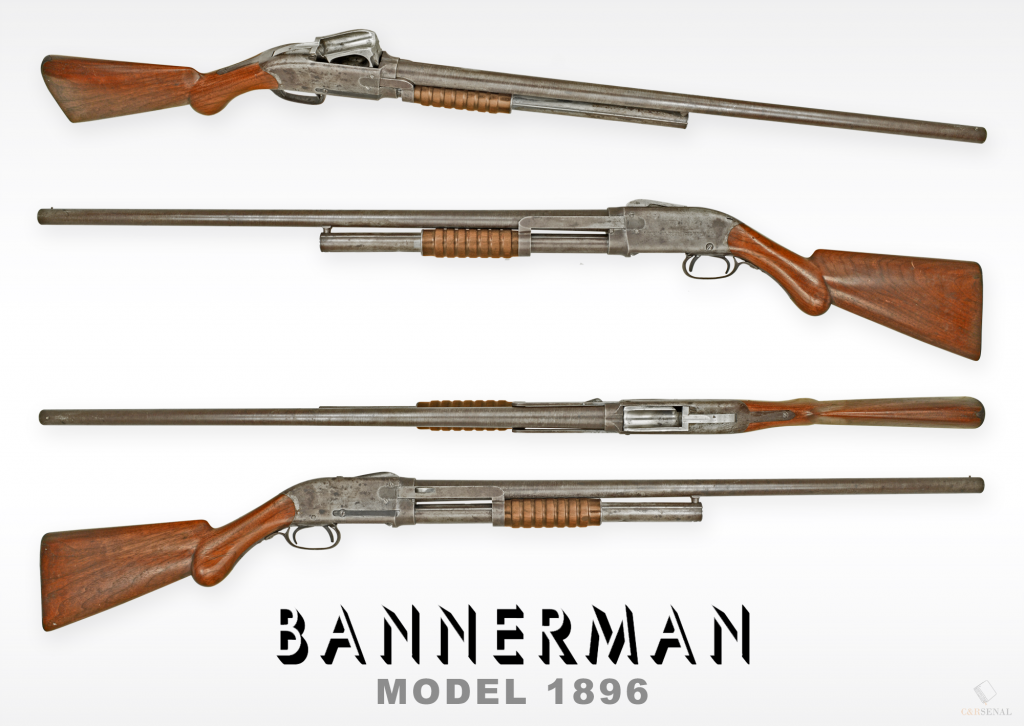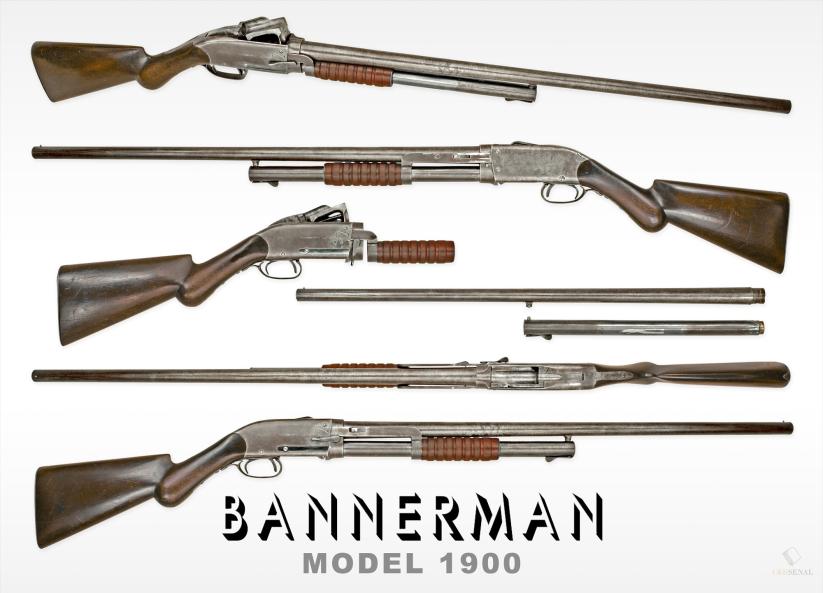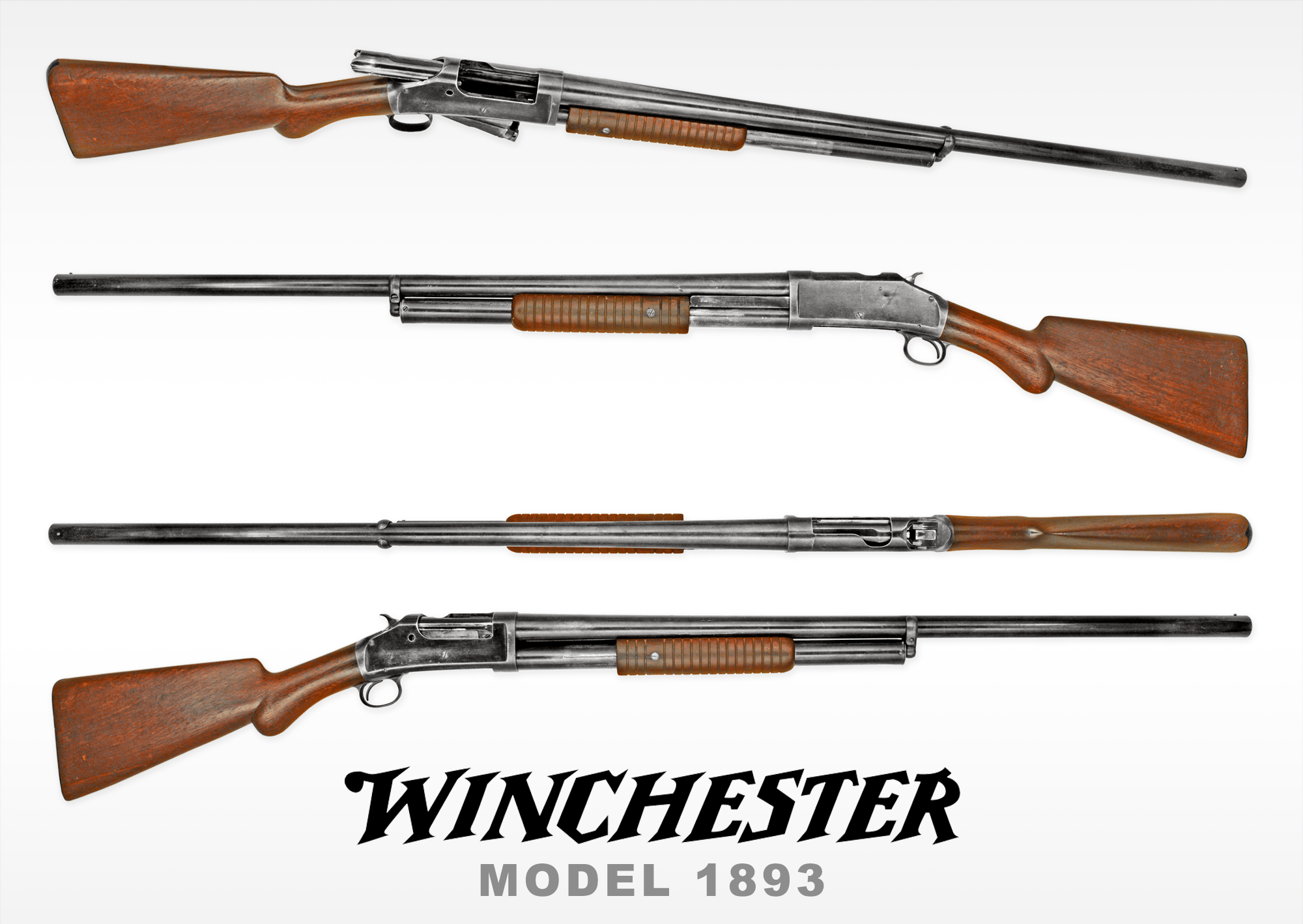America’s Prototype ‘Trench Guns’ Of World War I
by
- BRUCE N. CANFIELD, FIELD EDITOR
posted on May 23, 2022
NEWS, HISTORICAL SHOTGUNS, PUMP-ACTION SHOTGUNS
Support NRA American Rifleman DONATE
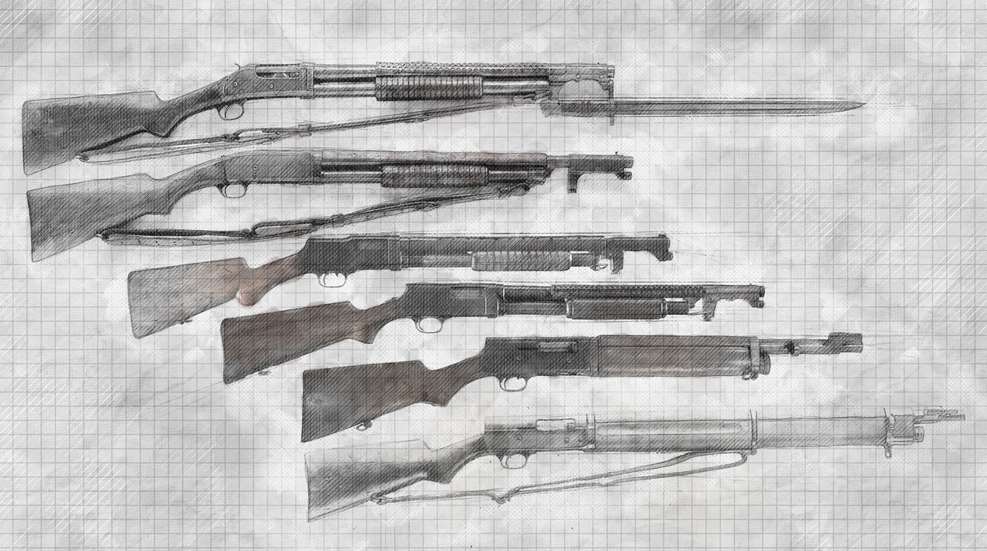
When the United States became actively involved in the First World War during the spring of 1917, our troops deployed to France soon found themselves in the unfamiliar environment of trench warfare. Since an important component of such fighting was periodic raids on enemy trenches, guns that were capable of being effectively wielded in close confines were particularly valuable. Handguns weren’t sufficiently powerful, and the standard Model of 1903 and Model of 1917 rifles were too long, cumbersome and slow- firing to be truly effective in such situations. Clearly, another type of arm was needed, but there was some debate as to just what it should be.
When deciding on what type of trench-fighting gun would be most efficacious, some senior Army officers, including Gen. John J. Pershing, then commander of the American Expeditionary Forces, remembered their experiences in the Philippines almost two decades earlier. When the United States gained possession of the Philippines from Spain following the Spanish-American War of 1898, our troops were faced with the unpleasant task of battling several indigenous groups who had fought the Spanish for decades and looked upon the Americans as just another occupying force. Foremost among these were the fierce Moro tribesmen who exacted a deadly toll on American troops in close-quarters combat. The standardized .30-40 Krag rifles and .38 Long Colt revolvers proved to be unequal to the task, and a more effective arm was sorely needed. Circa 1900, the U.S. Army purchased some 200 of the newly introduced Winchester Model of 1897 short-barrel, slide-action shotguns for use in the ongoing “pacification” campaigns in the Philippines. These “sawed-off” shotguns proved to be devastatingly effective close-quarters guns and were instrumental in eventually helping to quell the bloody uprisings.
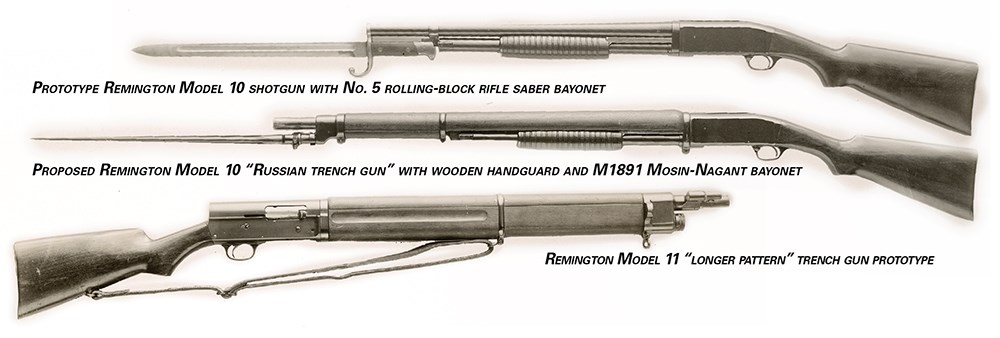
Given the effectiveness of shotguns in the Philippines, it was recognized that a short-barrel, 12-ga. repeating shotgun loaded with 00 buckshot would also be a formidable tool in the trenches of France. It was decided to develop a shotgun specifically modified for trench warfare. It was logical to base the new weapon on the tried and proven M1897 shotgun, but the War Dept. stipulated that the gun must be capable of mounting a bayonet. The M1897s previously used in the Philippines were standard commercial-production, plain-barrel “riot guns,” so a method of mounting a bayonet on the proposed shotgun had to be devised. Working in conjunction with Springfield Armory, Winchester developed a metal one-piece bayonet adapter/handguard assembly. Since it would be necessary to grip the barrel to properly wield a bayonet-equipped shotgun, the assembly had a ventilated metal handguard for protection from a hot barrel. The adapter was designed for use with the M1917 bayonet as used with the M1917 rifle. The new combat shotgun was soon dubbed the “trench gun,” although this was not official nomenclature. Production contracts were given to Winchester for the new firearm.
Since it was believed the new “trench gun” would be a valuable addition to our Doughboys’ arsenal, the Ordnance Dept. solicited proposals from other manufacturers for bayonet-equipped versions of their repeating shotguns. Remington Arms Co. submitted a “trench-gun” variant of its Model 10 slide-action repeating shotgun. Rather than the all-metal one-piece handguard/bayonet adapter used with the Winchester gun, the Remington Model 10 design featured a wooden handguard and separate bayonet lug, also adapted for the M1917 bayonet. The modified Remington Model 10 was adopted and put into production. The U.S. Army now had two standardized “trench guns,” but other models continued to be evaluated.

Remington Model 11 “short pattern” trench gun prototype
Although Remington had accepted large contracts for arms from other nations—chiefly Pattern 1914 rifles for Great Britain and M1891 Mosin-Nagant rifles for Russia— the company was still looking for additional business. Since the American government had adopted the Model 10 trench gun, the company believed that such guns might appeal to other nations but recognized that these potential purchasers likely wouldn’t be interested in a shotgun designed to use the U.S. M1917 rifle bayonet. Remington had a rather large number of “saber” bayonets for its No. 5 rolling-block rifles left over from previous South American contracts. The company submitted a standard Model 10 shotgun with a metal bayonet lug brazed to the underside of the barrel. However, no type of protective handguard was provided, which obviously limited the gun’s effectiveness in bayonet fighting. A prototype was submitted to the Ordnance Dept. for review, but little interest was shown, and it was rejected.
Undeterred, Remington turned its attention to the Russian government, which had placed large contracts for M1891 Mosin-Nagant rifles and bayonets. The Russian bayonet was an all-metal socket design with a cruciform blade. Having learned from the previous unsuccessful submission, the proposed “Russian trench gun” was equipped with a wooden handguard somewhat similar to that used on the U.S. Model 10 trench gun. The bayonet was locked into a metal flange and was not attached to the barrel as was the norm with most bayonets. Although it appeared to be a functional design, the fall of the Czarist government resulted in no real consideration being given to the gun, and it was discarded as well.
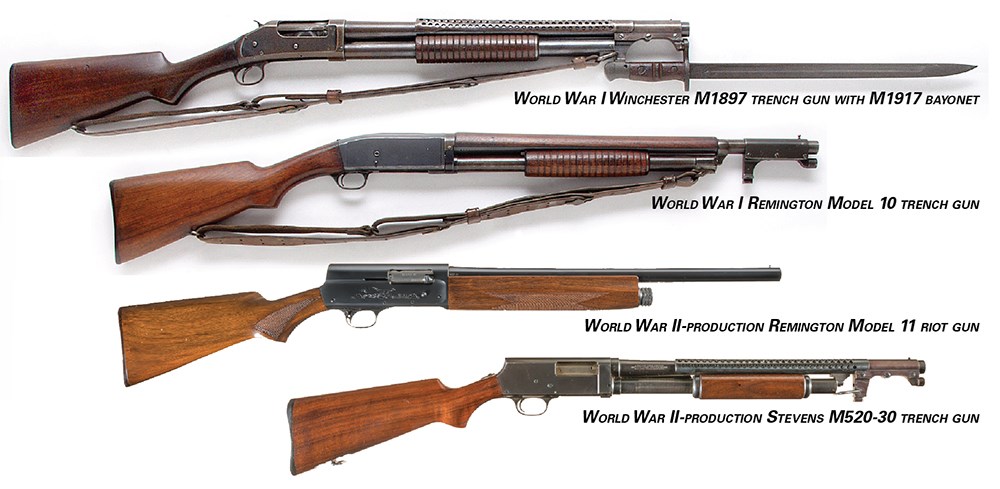
After these two abortive modified Model 10 prototypes, Remington came up with one of the most novel ideas for a trench gun ever conceived. A popular gun in the company’s product line was the semi-automatic Model 11 shotgun designed by the legendary John Moses Browning. It was believed that such a gun would be ideal for trench warfare due to its impressive rate of fire. There was, however, one major problem: The Model 11’s recoil-operated mechanism required that the barrel move back and forth with each shot. Since Ordnance specifications for trench guns mandated that they be equipped with a bayonet, Remington engineers had to devise some method of overcoming this inherent problem. Mounting a bayonet on the barrel wouldn’t be feasible because the added weight would not allow the barrel to reciprocate properly. Also, if a barrel-mounted bayonet was thrust into an adversary, the barrel would move backward and could, at least partially, eject a chambered shell, resulting in a jam.
The problem was ingeniously addressed by mounting a metal sleeve (tube) to the front of the receiver into which the barrel was fitted. A bayonet lug could be attached to the sleeve that didn’t affect the reciprocal movement of the barrel. In order to permit the gun to be properly grasped for bayonet fighting, a wooden fore-end that served as a handguard was fitted. There were at least two variations of the design that differed primarily in length with a slightly greater tubular magazine capacity for the longer pattern. It appeared to be a rugged and functional arm that likely would have been quite effective for its intended purpose.
The prototype Model 11 trench guns were completed by the fall of 1918, around the time of the Armistice. However, with the war ending, the Ordnance Dept. abandoned further consideration of the shotgun. The prototypes were shelved, and, perhaps surprisingly, the concept was never revisited. It is intriguing to think that if the gun had been available a year or so earlier, it might have been adopted. As events transpired, even though the Model 11 trench gun never made it past the prototype stage, large numbers of plain-barrel Model 11 riot guns (and long-barrel training guns) subsequently saw service during World War II.

Stevens Model 520 trench gun prototype
In addition to the Remington designs, there was another proposed trench gun fabricated and submitted for testing in 1918. The J. Stevens Arms and Tool Co. developed a trench gun based on its Model 520 slide-action shotgun. Rather than using a wooden handguard, like the Remington guns, or a one-piece metal handguard/bayonet adapter assembly, like Winchester, Stevens equipped its gun with a ventilated metal handguard and a separate bayonet lug on the barrel. The shotgun reportedly acquitted itself quite well in testing, and it is speculated that a small number may have been purchased, but this is unconfirmed. Unfortunately for Stevens, like the Remington Model 11 prototypes, the end of the war resulted in the cancellation of all pending contracts. Stevens had better luck with a trench-gun version of the Model 520-30 (an improved 520) during World War II when substantial numbers were procured and issued along with some Stevens M620A trench guns.
If the First World War had lasted into 1919 as had been expected, it is possible that at least two additional trench guns, the Remington Model 11 and Stevens 520, could have found their way into the trenches. Instead, the only two trench guns to be issued during the war were the Winchester M1897 and the Remington Model 10. Nevertheless, the efforts to develop innovative designs for a new type of combat arm, the “trench gun,” illustrate the resourcefulness and expertise of American gunmakers at a critical time in our history.
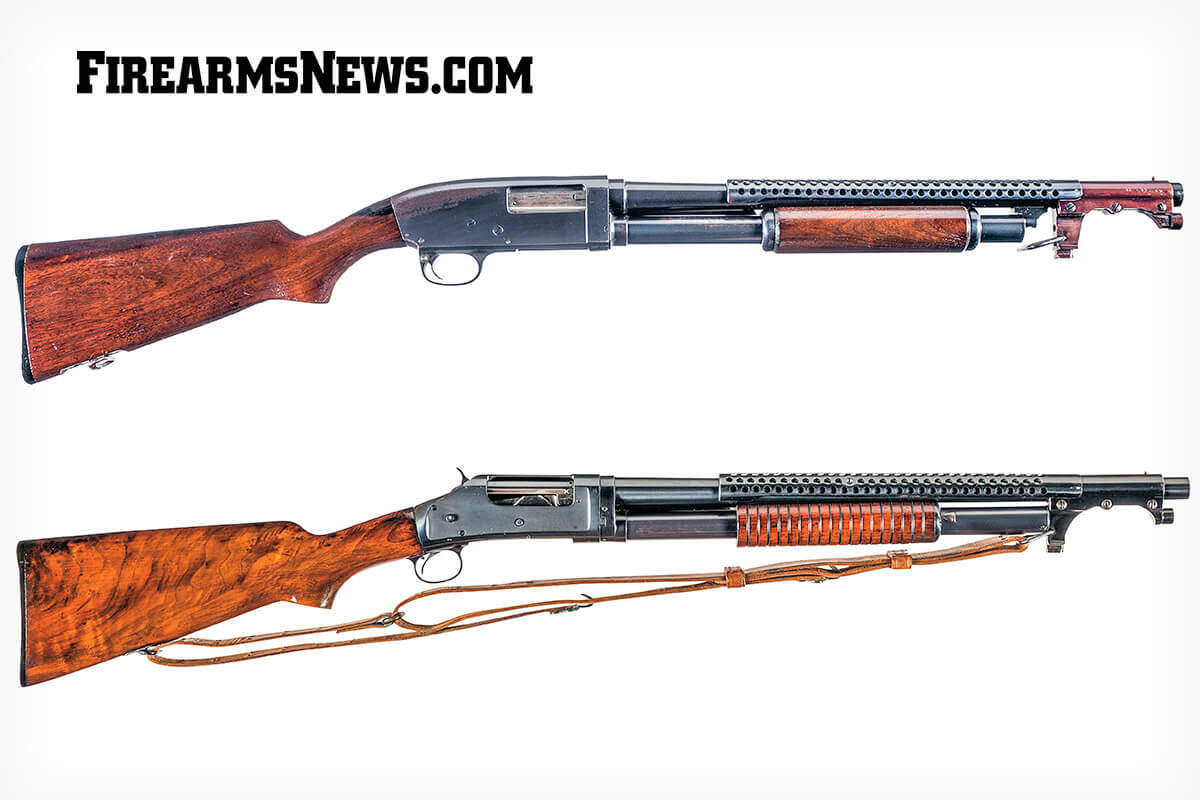
SEE PHOTO GALLERY
Right Side view of a Model 12 Trench Gun (Top). The Winchester Model 97 (bottom) was the iconic World War I Trench Gun and also saw action during World War II. (Courtesy of Rock Island Auction Service)



